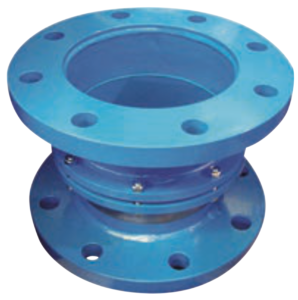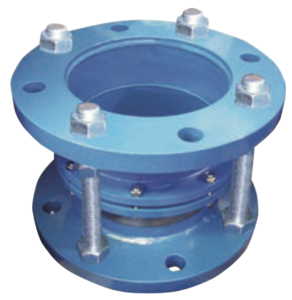Configuration options
 |
Telescopic Reel Strapless Disassembly. |
 |
Disassembly Telescopic Reel with Tie Rods. |
– Flange dimensions and holes according to: DIN 2576 PN10, DIN 2502 PN16 and DIN 2503 PN25.
CHARACTERISTICS:
– The dismantling joint enables easy installation and dismantling of isolating valves, not return valves, low metering equipment, pumps etc.
– Flanges and tubes with Epoxy coating.
– Threaded rod and nuts are not included in the dismantling joint, it is an option.
– Working conditions NBR: From -1 to 16 bar, from -10 to 80 ºC.
| Aplications | Corrosive fluids , Waste water |
|---|---|
| Temperatura máxima | 80 ºC |
Aplications
Foot valves are commonly used in ponds, swimming pools, wells and almost anywhere there is a pump.
The surface or opening of the foot valve is larger than that of the pipe, thereby minimizing pressure loss (energy dissipated due to friction along the pipe).
Our stripping spool is designed to compensate for the axial displacement of a pipe during installation and stripping. This allows easy installation and disassembly of pipes and accessories or equipment such as valves, meters and pumps.
This disassembly spool plays a decisive role in the design and layout of pipes and valves. It is a great help during the installation and removal of sections of pipe and valves. Without it, it is almost impossible to install a valve on an installed section of pipe. Thanks to this adjustability, the valve can be mounted, and the takedown spool can be adapted to the exact length required before being securely connected to the flanges, while on disassembly, readjustment of the spool creates enough space for Loosen and dismantle the valve. In both cases, the reel ensures quick assembly and disassembly, reducing installation operations and downtime. The procedure is similar when sections of pipe have to be joined. Additionally, disassembly reels can be used to fill gaps, for example, where a pump installed in a fixed position has to be connected to a pipe protruding from a wall.
It is formed by a female part or flange that is located on one side of the disassembly spool and connected to the pipe or valve and another part or male flange at the other end of the spool that slides inside the female flange, and thanks to the maximum longitudinal adjustment varying depending on DN between ±30 and ±50 mm, the disassembly spool can be inserted between the pipe and valve sections. It has a smaller sliding intermediate flange that, when the required length is reached, tightens against the small flange of the female part, compressing a rubber gasket (NBR) and achieving sealing between the female flange and the male flange.
Threaded rods (braces) are used for mooring and connection to the pipe flanges. At the same time, they also serve to transfer forces from one side of the takedown spool to the other.
